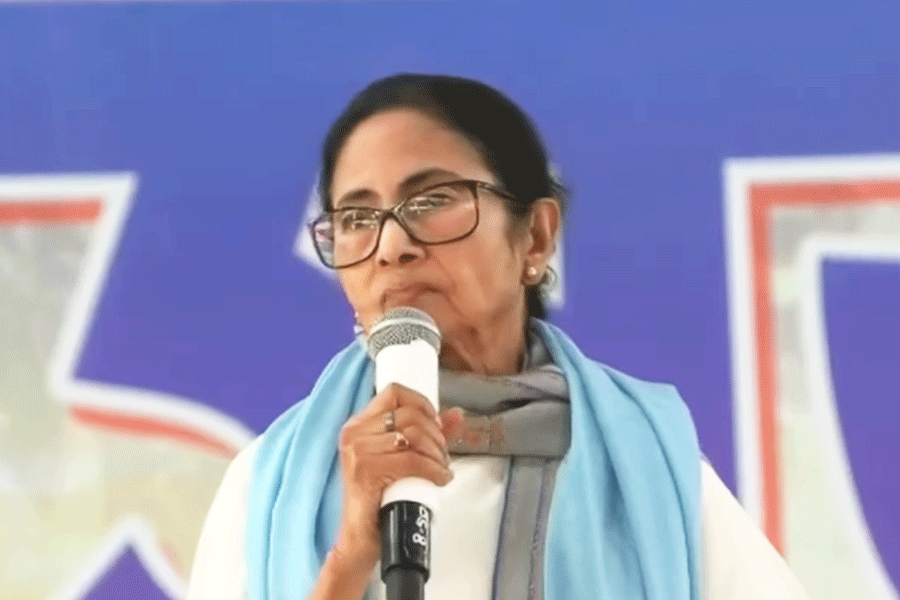Stale news in brief: Paul McCartney has said that artificial intelligence has helped to finish the ‘last’ Beatles record based on a demo that John Lennon had worked on. Unconfirmed, the song may well be Now and Then, which Lennon composed and recorded as a demo in the late 1970s.
Before you pounce on the fact that by the time the song was recorded, the group had already called it a day, how are Ringo Starr and George Harrison coming into the picture? The song was part of the demo tape that also contained the songs Free As A Bird and Real Love. It was a tape that Lennon’s widow, Yoko Ono, handed over to McCartney in 1994. Ultimately, the song in question was shelved because Harrison called the quality “f**king rubbish” but there was a beautiful verse by Lennon.
Whether Lennon would have approved of the release is another story but the technology that is being used has been making progress in leaps and bounds over the last few years. Making McCartney agree was the technology he experienced firsthand when director Peter Jackson made his recent almost eight-hour-long documentary Get Back around the making of Let It Be. Jackson was able to extract Lennon’s voice from a cassette recording of the late singer’s voice and a piano. Actually, it was the documentary’s dialogue editor, Emile de la Rey, who had trained a computer to isolate the Beatles’ voices from the rest of the audio, including background sounds and their instruments.
Technology thatis being used
It wasn’t that simple. The project involved machine learning researcher Paris Smaragdis of the University of Illinois Urbana-Champaign to develop a neural network called MAL or Machine Assisted Learning. The task was to isolate voices and musical instruments. It is this vocal isolation that allowed McCartney to have a virtual duet with Lennon at Glastonbury. Macca dived into I’ve Got a Feeling and soon Lennon joined in on a screen.
The idea of Audio Source Separation has been around for some time. The problem that has been mitigated to a large extent involves recovering or reconstructing one or more source signals that have been mixed with other signals. Think of it as “umixing” or “demixing”.
The neural network that Smaragdis and Rey worked on is capable of isolating individual voices or instruments and “re-synthesizing them in a realistic way that matched trained samples of those instruments or voices in isolation”. Perhaps it’s not as perfect as Lennon would have wanted it to be, but to the casual listener it will hardly sound out of place, especially now that the project has McCartney’s blessing.
The process of demixing is not new. More than a couple of decades ago, Christopher Kissel, an electronics test engineer from Long Island, tried to do it. Since until the 1960s, almost all the music was recorded and heard in mono, instruments and vocals were recorded onto a single track of tape. He purchased a Mac in 2000 and went about the process of transforming pop songs from the 1950s and ’60s into two-channel stereo versions. He used an early digital audio workstation called sonicWORX and one of his early projects involved Miss Toni Fisher’s 1959 hit The Big Hurt.
Endless possibilities
What McCartney is talking about is far more complicated and nuanced. They had tried to work on Now and Then around 1995 but George Harrison wasn’t happy with the poor quality of the Lennon track. Now that technology is here to help with the process, it opens up a floodgate of possibilities.
AI has gone far beyond just separating instruments and vocals from the background. Earlier this year, a song titled Heart On My Sleeve appeared online, claiming to use the voices of Drake and the Weeknd. Ultimately it was flagged by Universal Music Group. There are plenty of such tracks on YouTube and other sites, like AI-generated versions of Rihanna covering a Beyoncé song and another that uses AI vocals from Kanye West to cover the song Hey There Delilah.
In April, Spotify CEO Daniel Ek touched upon the topic of AI on a call with investors and analysts. He said: “I don’t think I’ve ever seen anything like it in technology, how fast innovation and progress is happening in all the really both cool and scary things that people are doing with AI.”
AI is certainly a threat to musicians who have a factory approach to churning out endless derivative pop. It can’t replace original work. Ultimately, it will come down to how musicians use AI. Artistes like Grimes have accepted AI and allow creators to use their voice in return for a cut of the royalties. Then there are musicians like Sting and Nick Cave who don’t intend to warm up to AI. The legendary Cave recently said: “This is what we humble humans can offer, that AI can only mimic, the transcendent journey of the artiste that forever grapples with his or her own shortcomings. This is where human genius resides, deeply embedded within, yet reaching beyond, those limitations.”
All the AI in the world will ultimately fuel something new in the bootleg segment of the industry. Anyone can use software like SoftVC VITS Singing Voice Conversion to train a model based on any artiste and in a matter of minutes, you may have something like Lennon covering Don’t Look Back In Anger by Oasis or Kacey Musgraves covering A Day In The Life by the Beatles.
A young singer-songwriter and multi-instrumentalist like Aarifah has a different take on AI. “I love AI. I think it has a valuable role in visualising things that we can’t even begin to comprehend, there are always pros and cons to every new bit of technology’s arrival but on my part, I’ve explored it to create art direction references for my own work,” she told t2oS.
McCartney is around to judge the quality of the final Beatles record and the effort may bring in new fans but what do Beatles purists feel? Perhaps alienated. To AI engineers, working on the Beatles track is about sound separation but look at the larger picture, and that too from the perspective of Lennon, who is not around to defend or attack the project, it’s about soul separation. Music is about the soul. AI is willing to separate it from the music.










